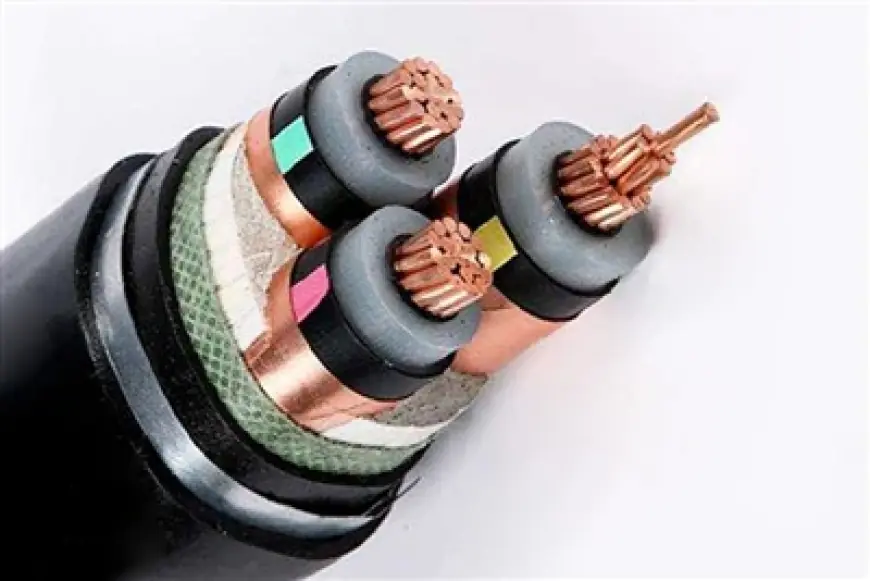Top Applications of LT XLPE Cables in Industries
Discover the top industrial uses of LT XLPE Cables, known for durability, heat resistance, and efficiency in power distribution across demanding environments.

In today’s industrial landscape, the demand for robust, durable, and safe power transmission systems is at an all-time high. As industries grow more reliant on heavy machinery and complex electrical infrastructure, the importance of choosing the right type of cable becomes paramount. Among the various cable types available, Low Tension Cross-Linked Polyethylene (LT XLPE) cables have emerged as a preferred choice across numerous sectors due to their outstanding electrical, mechanical, and thermal properties.
LT XLPE Cables are specifically designed for low voltage applications (up to 1.1 kV) and are extensively used in power distribution systems. Their construction includes cross-linked polyethylene insulation, which significantly enhances their performance in demanding industrial conditions. These cables are highly resistant to heat, chemicals, moisture, and mechanical stress, making them ideal for environments where safety and reliability are critical.
In this blog, we explore the top applications of LT XLPE Cables in various industries, highlighting why they are becoming the standard for low voltage power distribution.
1. Manufacturing and Processing Plants
Manufacturing units often have complex electrical systems powering heavy-duty machinery, motors, and automation equipment. LT XLPE Cables are frequently used to ensure consistent power supply across the production floor. Their ability to withstand high temperatures and harsh working conditions makes them ideal for such environments. Additionally, their flame-retardant properties ensure safety in case of electrical faults or overloads.
2. Oil and Gas Industry
In oil refineries and gas processing plants, safety and reliability are non-negotiable. These facilities are exposed to highly flammable substances, making fire-resistant cables a necessity. LT XLPE Cables are widely used in control panels, instrumentation circuits, and power distribution systems in these industries. Their chemical resistance and flame-retardant properties ensure minimal risk and compliance with safety regulations.
3. Power Generation Plants
Thermal, hydro, and renewable energy plants depend heavily on efficient cable systems for transmitting electricity from generators to transformers and control rooms. LT XLPE Cables are preferred here for their low dielectric loss and long service life. Their thermal stability ensures that they perform effectively even under high load conditions, which are common in power plants.
4. Construction and Infrastructure Projects
Whether it's commercial buildings, hospitals, or metro rail systems, LT XLPE Cables are a trusted choice for safe and efficient power distribution. These cables are often used in underground and conduit installations due to their superior insulation and moisture resistance. In infrastructure projects where consistent performance and long-term reliability are needed, LT XLPE cables deliver excellent results.
5. Mining Industry
Mines present some of the most challenging conditions for electrical systems: confined spaces, high mechanical stress, and the presence of moisture and chemicals. LT XLPE Cables are widely used for powering equipment like conveyor belts, drills, and ventilation systems. Their rugged build and resistance to corrosion and abrasion make them suitable for such demanding environments.
6. Chemical and Pharmaceutical Industries
In environments where exposure to corrosive chemicals is common, the cable material must be chemically inert. LT XLPE Cables offer excellent resistance to acids, alkalis, and solvents, making them ideal for chemical and pharmaceutical facilities. They are used in both power and control applications, ensuring operational safety and equipment longevity.
7. Data Centers and IT Facilities
Reliable power is crucial in data centers to prevent downtime and data loss. LT XLPE Cables are used in server rooms and UPS systems to ensure uninterrupted power supply. Their high dielectric strength and thermal endurance help manage the heat load generated by IT equipment, supporting efficient operations 24/7.
8. Transportation Sector
From airports to railways and shipping docks, LT XLPE Cables are used in a wide array of transportation projects. They support power distribution in lighting systems, control rooms, signaling equipment, and charging stations. Their ability to handle vibrations, weather fluctuations, and high loads makes them suitable for these applications.
9. Renewable Energy Installations
Solar and wind energy installations often rely on LT XLPE Cables to transmit power from generation units to inverters and batteries. Their UV resistance and thermal stability make them perfect for outdoor installations. In solar farms, these cables are commonly laid underground, where their water resistance proves invaluable.
Advantages of LT XLPE Cables in Industrial Use
Understanding why industries prefer LT XLPE Cables requires a look at the advantages they offer:
-
High Thermal Resistance: Suitable for continuous operation at temperatures up to 90°C and short-circuit temperatures up to 250°C.
-
Chemical and Moisture Resistance: Ideal for harsh environments with exposure to oil, chemicals, and water.
-
Improved Electrical Properties: Low dielectric loss and high insulation resistance ensure efficient power transmission.
-
Long Service Life: Excellent resistance to environmental stress and mechanical damage leads to lower maintenance and replacement costs.
-
Ease of Installation: Flexible and lightweight, making handling and installation simpler compared to other cables.
Factors to Consider Before Choosing LT XLPE Cables
When selecting LT XLPE Cables for industrial applications, the following factors must be considered:
-
Voltage Rating: Ensure the cable matches the system’s voltage requirements.
-
Load Capacity: Consider the current-carrying capacity needed for machinery and equipment.
-
Environmental Conditions: Match the cable type to the specific environmental stresses it will encounter.
-
Compliance Standards: Always choose cables that adhere to national and international safety standards.
Conclusion
The wide-ranging applications of LT XLPE Cables across multiple industries underscore their unmatched versatility and performance. From enhancing operational efficiency in manufacturing plants to ensuring safety in hazardous environments like oil refineries and mines, these cables play a vital role in modern industrial infrastructure.
Their ability to handle thermal stress, resist chemicals, and provide reliable electrical insulation makes them a smart investment for any industry aiming for long-term performance and reduced operational risk. As the demand for efficient, safe, and eco-friendly power solutions grows, LT XLPE Cables will continue to be a cornerstone in industrial power distribution systems.
What's Your Reaction?
 Like
0
Like
0
 Dislike
0
Dislike
0
 Love
0
Love
0
 Funny
0
Funny
0
 Angry
0
Angry
0
 Sad
0
Sad
0
 Wow
0
Wow
0



















































